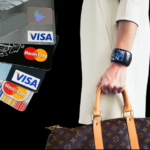Focusing on Design: A Deep Dive into Principles, Processes, and Impact
Design, in its broadest sense, is the intentional shaping of our environment and experiences. It’s not merely about aesthetics; it’s about problem-solving, innovation, and creating value. From the blueprint of a skyscraper to the user interface of a mobile app, design permeates every aspect of modern life. Focusing on design, therefore, is not just about making things look pretty; it’s about crafting solutions that are effective, efficient, and delightful. This article delves into the multifaceted world of design, exploring its fundamental principles, various design processes, and the profound impact it has on individuals, businesses, and society as a whole.
I. The Essence of Design: Principles and Philosophy
Before delving into the practical application of design, it’s crucial to understand the core principles that guide the design process. These principles, often rooted in psychology, aesthetics, and ergonomics, provide a framework for creating effective and user-centered designs.
1.1 User-Centered Design: The Foundation of Good Design
At the heart of any successful design endeavor lies a deep understanding of the user. User-centered design (UCD) is a philosophy that prioritizes the needs, goals, and behaviors of the intended users throughout the entire design process. [mfn 1] This approach ensures that the final product or service is not only functional but also intuitive, accessible, and enjoyable to use.
UCD involves a series of iterative steps, including:
- Understanding User Needs: Conducting research through interviews, surveys, usability testing, and ethnographic studies to gain insights into user behaviors, motivations, and pain points.
- Defining User Personas: Creating fictional representations of target users based on research data, capturing their demographics, goals, and frustrations.
- Developing User Scenarios: Outlining specific situations in which users might interact with the product or service, helping to identify potential usability issues.
- Prototyping and Testing: Creating low-fidelity prototypes to test design concepts with real users, gathering feedback and iterating on the design based on the findings.
By consistently putting the user first, designers can create solutions that truly meet their needs and expectations, leading to increased user satisfaction and adoption.
1.2 Aesthetic Principles: Harmony, Balance, and Visual Appeal
While functionality is paramount, aesthetics play a crucial role in shaping the user experience. Good design incorporates aesthetic principles that contribute to visual appeal, creating a sense of harmony, balance, and visual interest.
- Balance: Creating a sense of equilibrium in the visual composition, ensuring that elements are distributed evenly to avoid feeling cluttered or unstable. This can be achieved through symmetrical or asymmetrical arrangements.
- Proportion: Establishing harmonious relationships between the sizes and shapes of different elements within the design, creating a sense of visual hierarchy and guiding the viewer’s eye.
- Contrast: Using differences in color, size, shape, or texture to create visual interest and highlight important elements. Contrast helps to draw attention to key information and improve readability.
- Rhythm: Creating a sense of movement and visual flow through the repetition of elements, leading the viewer’s eye through the design in a predictable and engaging manner.
- Unity: Ensuring that all elements of the design work together harmoniously to create a cohesive and unified whole, avoiding visual clutter and confusion.
1.3 Ergonomics and Accessibility: Designing for All Users
Design should be inclusive and accessible to all users, regardless of their abilities or limitations. Ergonomics, the science of designing products and systems to fit the human body and mind, plays a crucial role in ensuring user comfort and safety. [mfn 2]
- Physical Ergonomics: Focusing on physical aspects such as posture, reach, and force, to minimize the risk of injury and discomfort. This includes designing chairs that provide proper back support, keyboards that minimize strain on the wrists, and interfaces that are easy to navigate.
- Cognitive Ergonomics: Addressing cognitive aspects such as perception, attention, and memory, to make the design easy to understand and use. This includes using clear and concise language, providing visual cues to guide users, and minimizing cognitive load.
- Organizational Ergonomics: Considering the organizational aspects of the work environment, such as communication, teamwork, and job design, to improve overall efficiency and well-being.
Accessibility, on the other hand, focuses on ensuring that products and services are usable by people with disabilities. This involves adhering to accessibility guidelines, such as the Web Content Accessibility Guidelines (WCAG), to create designs that are perceivable, operable, understandable, and robust.
1.4 Simplicity and Clarity: Less is More
In the realm of design, simplicity is often the ultimate sophistication. A well-designed product or service is easy to understand, use, and maintain. Avoiding unnecessary complexity and focusing on essential elements can lead to a more intuitive and enjoyable user experience.
- Removing Clutter: Eliminating unnecessary elements that distract from the core functionality of the design.
- Prioritizing Content: Focusing on presenting information in a clear and concise manner, using visual hierarchy to guide the viewer’s eye.
- Using Minimalist Aesthetics: Adopting a clean and uncluttered visual style that emphasizes functionality and usability.
By embracing simplicity and clarity, designers can create solutions that are not only aesthetically pleasing but also highly effective and user-friendly.
II. The Design Process: A Structured Approach to Problem-Solving
Design is not a random act of creativity; it’s a structured process that involves a series of well-defined steps. Different design disciplines may employ slightly different variations of the design process, but the core principles remain the same.
2.1 The Design Thinking Process: Empathize, Define, Ideate, Prototype, Test
Design Thinking is a human-centered, iterative problem-solving approach that emphasizes empathy, experimentation, and collaboration. [mfn 3] It’s widely used across various industries, from product development to service design, to create innovative solutions that meet user needs. The Design Thinking process typically consists of five key stages:
- Empathize: Gaining a deep understanding of the users and their needs through research, interviews, and observation. This involves putting yourself in the user’s shoes and experiencing their world firsthand.
- Define: Clearly defining the problem or challenge based on the insights gathered during the empathize stage. This involves framing the problem in a way that is actionable and human-centered.
- Ideate: Generating a wide range of potential solutions to the defined problem. This involves brainstorming, sketching, and exploring different design concepts without judgment.
- Prototype: Creating tangible representations of the potential solutions, ranging from low-fidelity paper prototypes to high-fidelity digital mockups.
- Test: Testing the prototypes with real users to gather feedback and iterate on the design based on the findings. This involves observing users interacting with the prototypes and collecting their feedback on usability, functionality, and aesthetics.
The Design Thinking process is iterative, meaning that designers can revisit and refine each stage as needed based on the feedback they receive. This iterative approach allows for continuous improvement and ensures that the final solution truly meets user needs.
2.2 The Double Diamond Design Process: Discover, Define, Develop, Deliver
The Double Diamond is a structured design process model that emphasizes both divergent and convergent thinking. [mfn 4] It consists of four distinct phases:
- Discover: Exploring the problem space and gathering insights through research, analysis, and user feedback. This involves identifying the root cause of the problem and understanding the context in which it exists.
- Define: Synthesizing the research findings and clearly defining the problem to be solved. This involves framing the problem in a way that is specific, measurable, achievable, relevant, and time-bound (SMART).
- Develop: Generating a range of potential solutions and prototyping them to test their feasibility and effectiveness. This involves experimenting with different design concepts and iterating on the designs based on feedback.
- Deliver: Refining the chosen solution and preparing it for implementation. This involves creating detailed design specifications, developing the final product or service, and launching it to the target audience.
The Double Diamond model emphasizes the importance of both exploration and focus, allowing designers to explore a wide range of possibilities before narrowing down to the most promising solution.
2.3 Agile Design: Iterative Development and Collaboration
Agile design is an iterative and collaborative approach to design that aligns with agile software development methodologies. [mfn 5] It emphasizes rapid prototyping, frequent testing, and continuous feedback to deliver working solutions quickly and efficiently.
- Sprints: Agile design projects are typically divided into short iterations called sprints, each lasting a few weeks.
- Daily Stand-ups: The design team meets daily to discuss progress, identify roadblocks, and coordinate efforts.
- Continuous Integration and Continuous Delivery (CI/CD): The design process is integrated with the development process to ensure that designs are implemented and tested frequently.
- User Stories: Design requirements are typically expressed as user stories, which describe the functionality from the user’s perspective.
Agile design allows for greater flexibility and responsiveness to changing user needs and market demands, enabling designers to deliver high-quality solutions in a fast-paced environment.
III. Design Disciplines: A Diverse Range of Specializations
The field of design encompasses a wide range of specializations, each with its own unique set of skills and expertise. Some of the most prominent design disciplines include:
3.1 Graphic Design: Visual Communication and Branding
Graphic design is the art and practice of planning and projecting ideas and experiences with visual and textual content. [mfn 6] It encompasses a wide range of applications, including:
- Branding: Creating visual identities for companies and organizations, including logos, color palettes, and typography.
- Marketing Materials: Designing brochures, posters, websites, and other marketing collateral to promote products and services.
- User Interface (UI) Design: Designing the visual elements of websites and mobile apps, ensuring that they are aesthetically pleasing and easy to use.
- Packaging Design: Designing the packaging for products, ensuring that it is visually appealing, informative, and functional.
Graphic designers use a variety of tools and techniques, including typography, color theory, image manipulation, and layout design, to create effective visual communications that achieve specific goals.
3.2 User Experience (UX) Design: Creating Seamless and Delightful Interactions
UX design is the process of designing products and services that provide meaningful and relevant experiences for users. [mfn 7] It focuses on understanding user needs, behaviors, and motivations to create solutions that are intuitive, efficient, and enjoyable to use.
- User Research: Conducting research to understand user needs and behaviors, using methods such as interviews, surveys, usability testing, and ethnographic studies.
- Information Architecture (IA): Organizing and structuring information in a way that is easy for users to find and understand.
- Interaction Design (IxD): Designing the way users interact with a product or service, ensuring that it is intuitive and responsive.
- Usability Testing: Testing the usability of a product or service with real users to identify and fix any usability issues.
UX designers work closely with other designers, developers, and stakeholders to create holistic user experiences that meet both user needs and business goals.
3.3 Industrial Design: Designing Products for Mass Production
Industrial design is the process of designing products that are manufactured through mass production techniques. [mfn 8] It involves considering factors such as aesthetics, functionality, ergonomics, materials, and manufacturing processes to create products that are both visually appealing and functional.
- Product Conceptualization: Developing initial design concepts based on market research and user needs.
- Sketching and Prototyping: Creating sketches and prototypes to explore different design ideas and refine the design.
- Computer-Aided Design (CAD): Using CAD software to create detailed 3D models of the product.
- Material Selection: Choosing appropriate materials for the product based on factors such as cost, durability, and aesthetics.
Industrial designers work closely with engineers, manufacturers, and marketers to bring their designs to life.
3.4 Service Design: Designing Seamless Customer Experiences
Service design is the activity of planning and organizing a business’s resources (people, props and processes) in order to improve the employee’s experience, and indirectly the customer’s experience. [mfn 9] It focuses on designing the end-to-end customer journey, ensuring that all touchpoints are seamless and aligned with the brand’s values.
- Customer Journey Mapping: Creating visual representations of the customer’s experience with a service, identifying pain points and opportunities for improvement.
- Service Blueprinting: Mapping out the processes and resources involved in delivering a service, including the front-stage (customer-facing) and back-stage (internal) activities.
- Prototyping and Testing: Testing service concepts with real customers and employees to gather feedback and iterate on the design.
Service designers work across organizational boundaries to create holistic customer experiences that are both efficient and delightful.
IV. The Impact of Design: Transforming Businesses and Society
Design is not merely a cosmetic addition; it’s a powerful force that can transform businesses and improve society. By focusing on design, organizations can achieve significant benefits, including:
4.1 Increased Customer Satisfaction and Loyalty
Well-designed products and services are more likely to satisfy customers, leading to increased loyalty and repeat business. When users have a positive experience with a product or service, they are more likely to recommend it to others and remain loyal to the brand.
4.2 Enhanced Brand Reputation and Recognition
Design plays a crucial role in shaping brand perception and recognition. A strong brand identity, consistent visual language, and engaging user experiences can help a company stand out from the competition and build a positive reputation.
4.3 Improved Efficiency and Productivity
Well-designed systems and processes can improve efficiency and productivity, reducing costs and improving employee morale. By streamlining workflows and eliminating unnecessary steps, design can help organizations operate more effectively.
4.4 Driving Innovation and Growth
Design thinking and other design methodologies can foster innovation and drive growth by encouraging experimentation, collaboration, and a focus on user needs. By challenging assumptions and exploring new possibilities, design can help organizations develop innovative products and services that meet unmet needs.
4.5 Promoting Sustainability and Social Responsibility
Design can play a crucial role in promoting sustainability and social responsibility by creating products and services that are environmentally friendly, socially inclusive, and ethically sourced. By considering the environmental and social impact of their designs, designers can contribute to a more sustainable and equitable future.
Conclusion: Embracing Design as a Strategic Imperative
In today’s competitive landscape, focusing on design is no longer a luxury but a strategic imperative. Organizations that embrace design as a core value and invest in design capabilities are more likely to succeed in the long run. By understanding the principles of good design, adopting effective design processes, and leveraging the diverse range of design disciplines, organizations can create products, services, and experiences that are not only visually appealing but also functional, efficient, and user-centered. Ultimately, focusing on design is about creating value for both the organization and its customers, contributing to a more innovative, sustainable, and human-centered world.
References
[mfn 1] Norman, D. A. (2013). The design of everyday things: Revised and expanded edition. Basic Books. [mfn 2] Sanders, M. S., & McCormick, E. J. (1993). Human factors in engineering and design. McGraw-Hill. [mfn 3] Brown, T. (2008). Design thinking. Harvard Business Review, 86(6), 84. [mfn 4] Design Council. (2005). The design process: What is the Double Diamond? Retrieved from [Insert hypothetical Design Council website link here] [mfn 5] Patton, J. (2014). User story mapping: Discover the whole story, build the right product. O’Reilly Media. [mfn 6] Ambrose, G., & Harris, P. (2010). The fundamentals of graphic design. AVA Publishing. [mfn 7] Garrett, J. J. (2010). The elements of user experience: User-centered design for the web and beyond. New Riders. [mfn 8] Löbach, B. (1976). Industrial design: Basics. Studio Vista. [mfn 9] Stickdorn, M., Hormess, M. E., Lawrence, A., & Schneider, J. (2018). This is service design doing: Applying service design thinking in the real world. O’Reilly Media.

























Add Comment